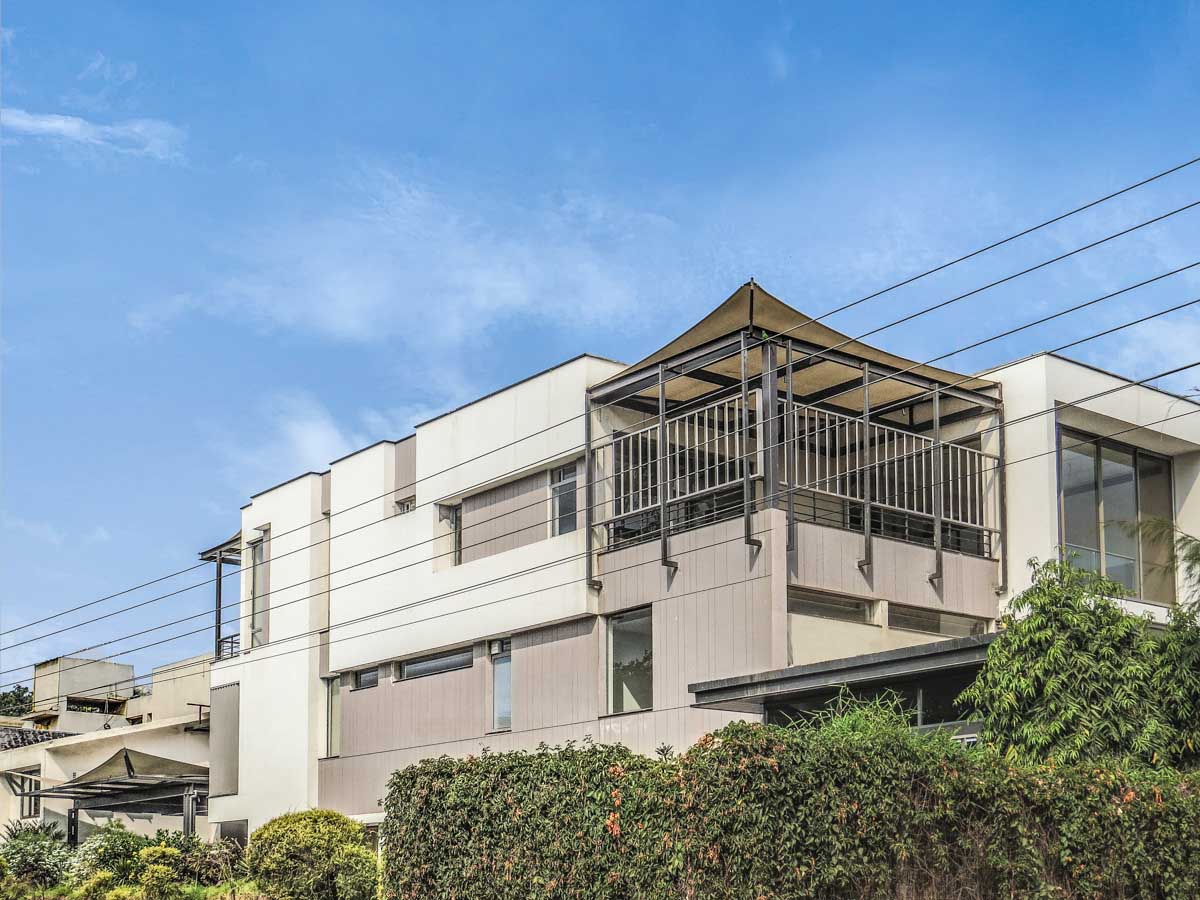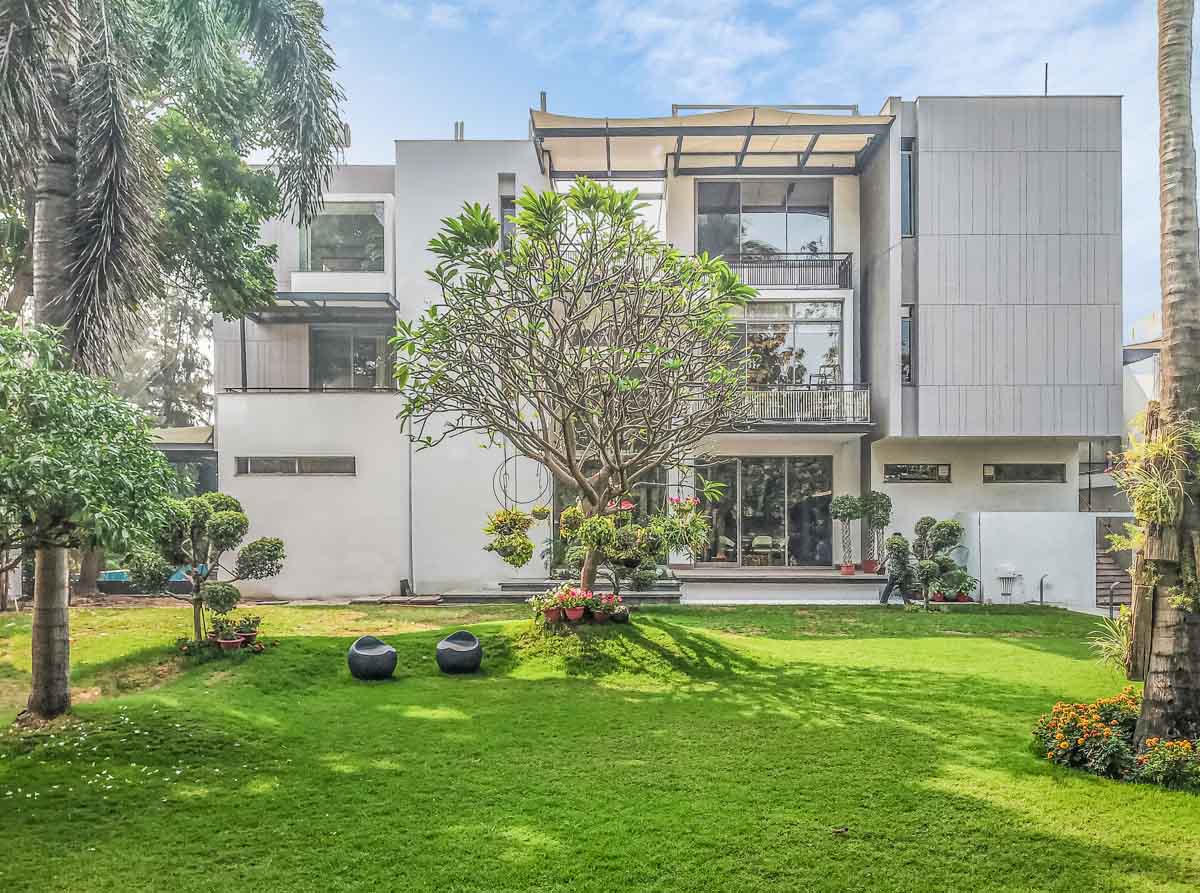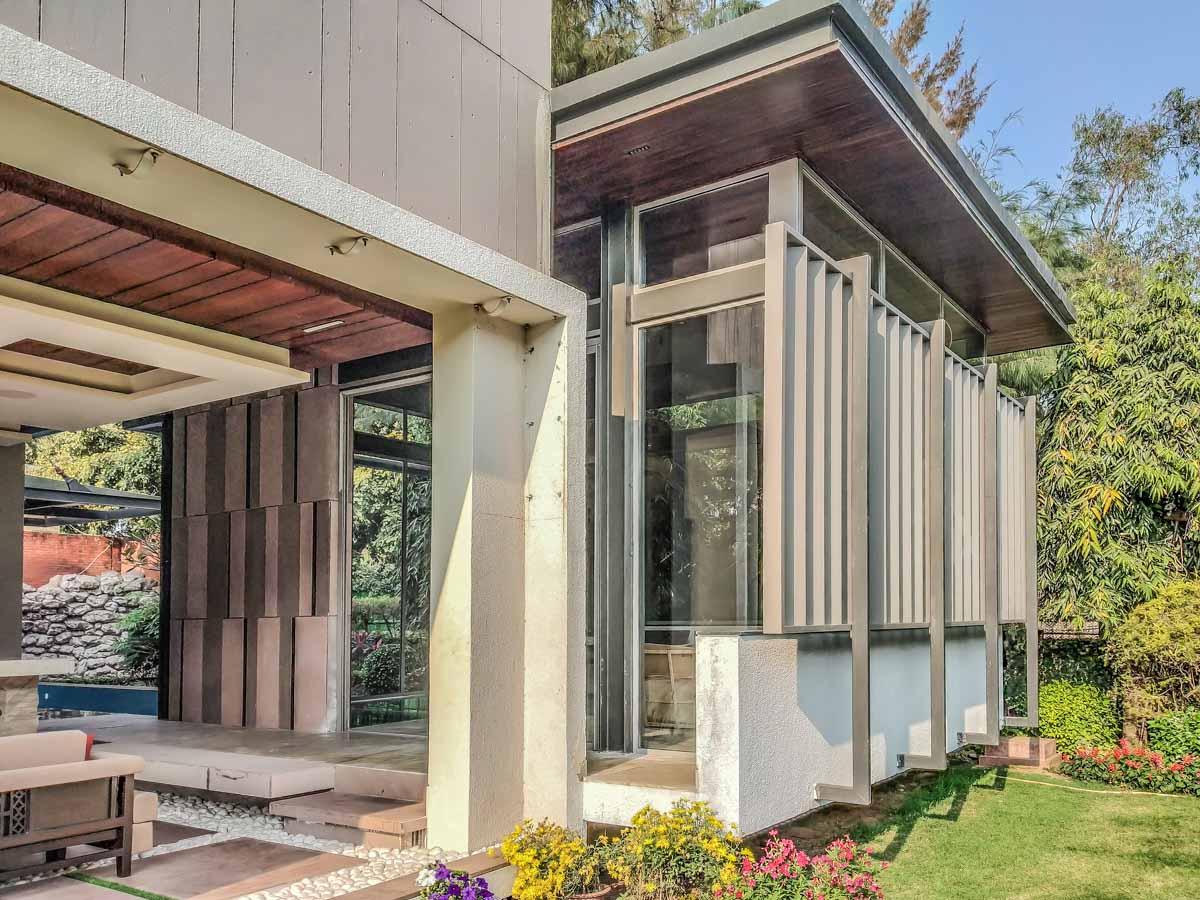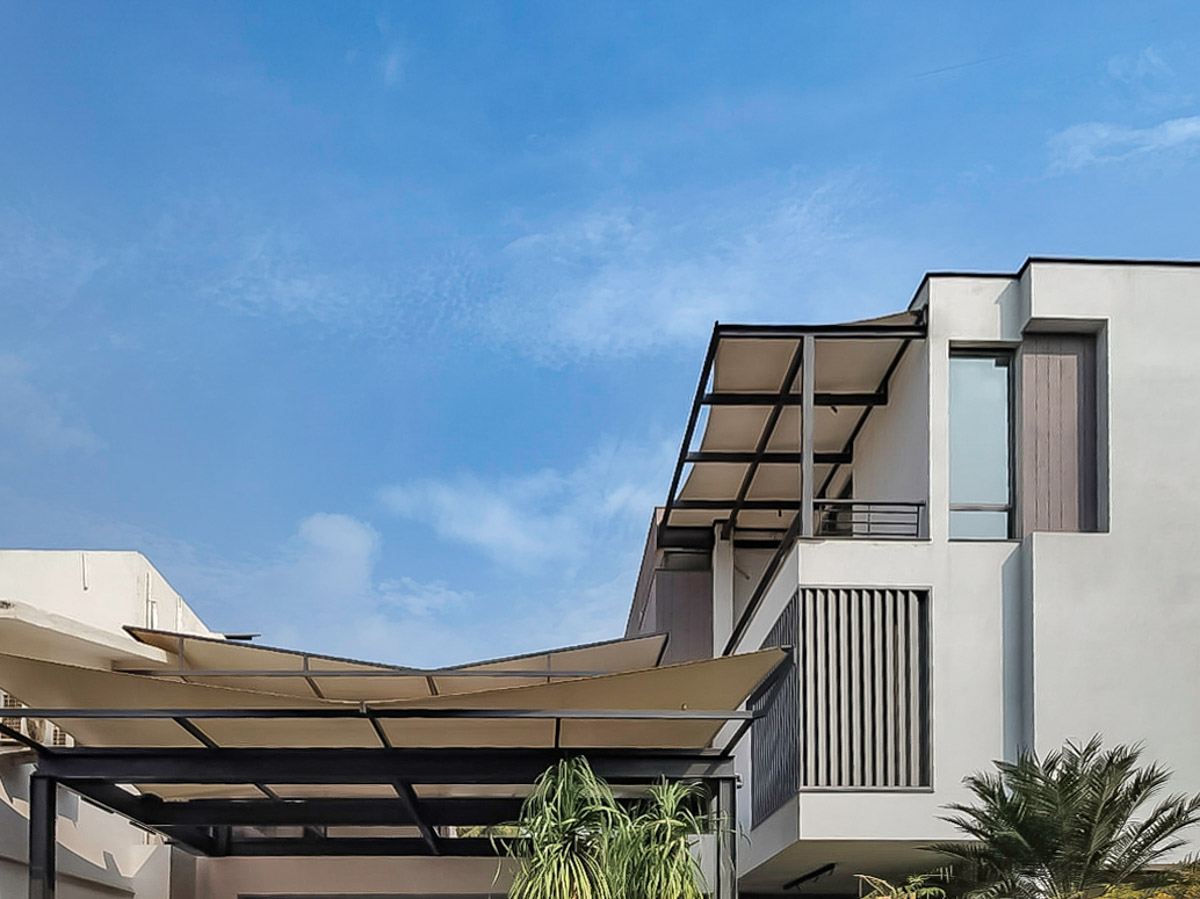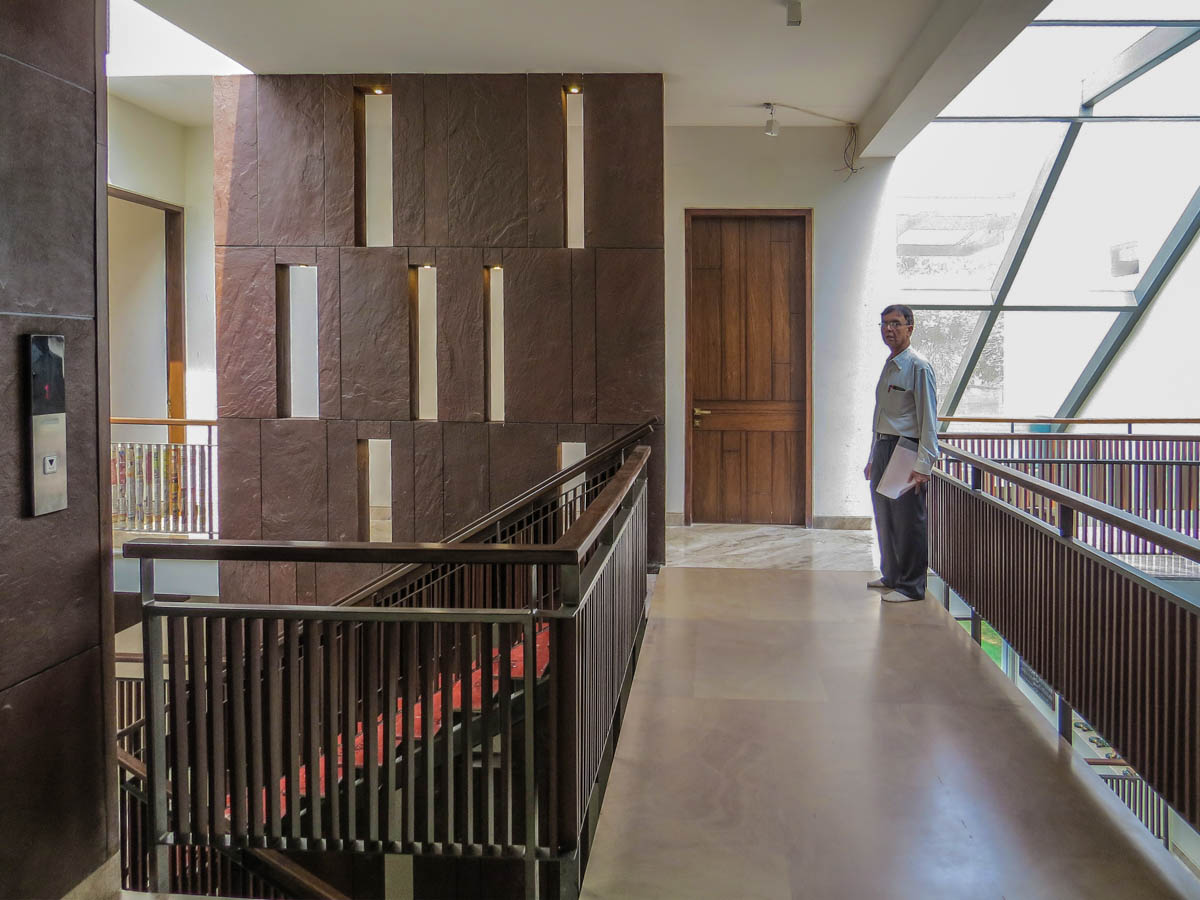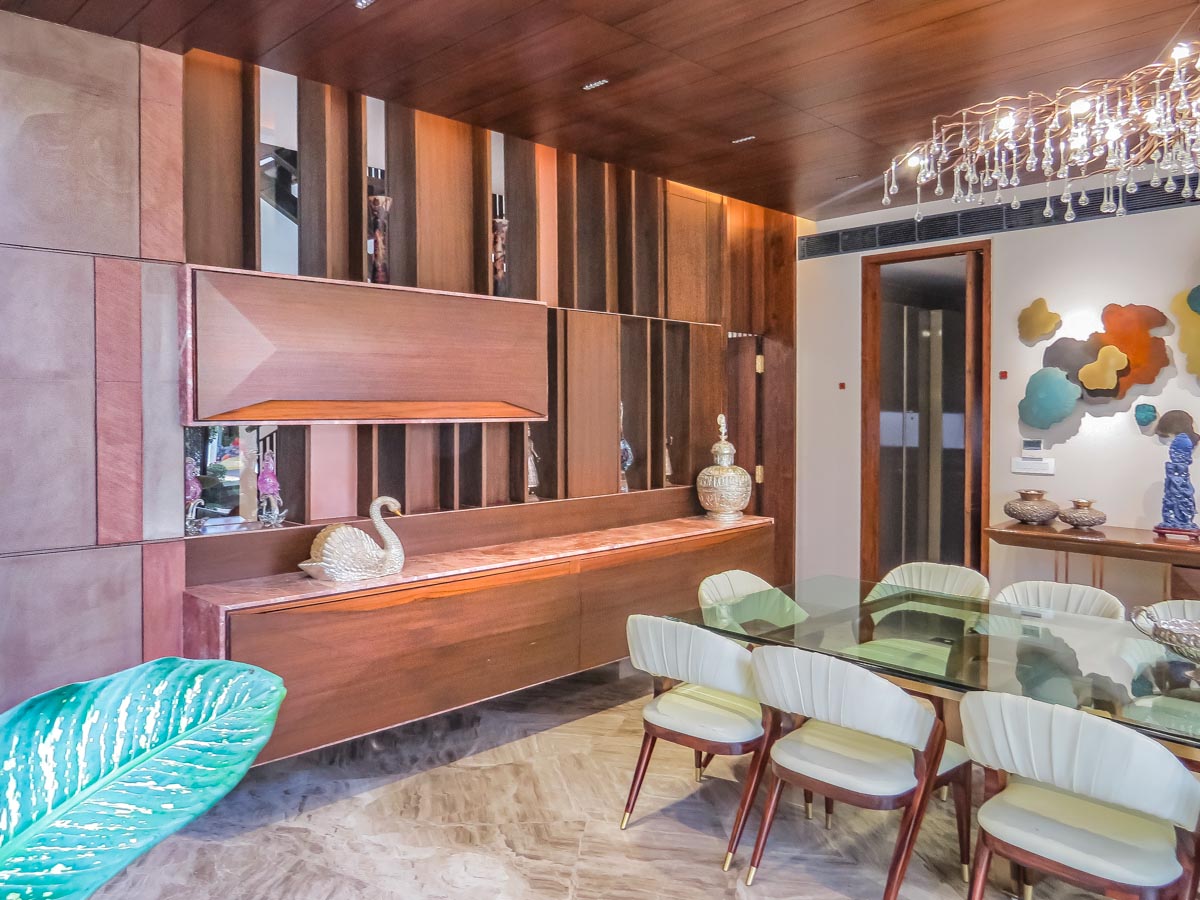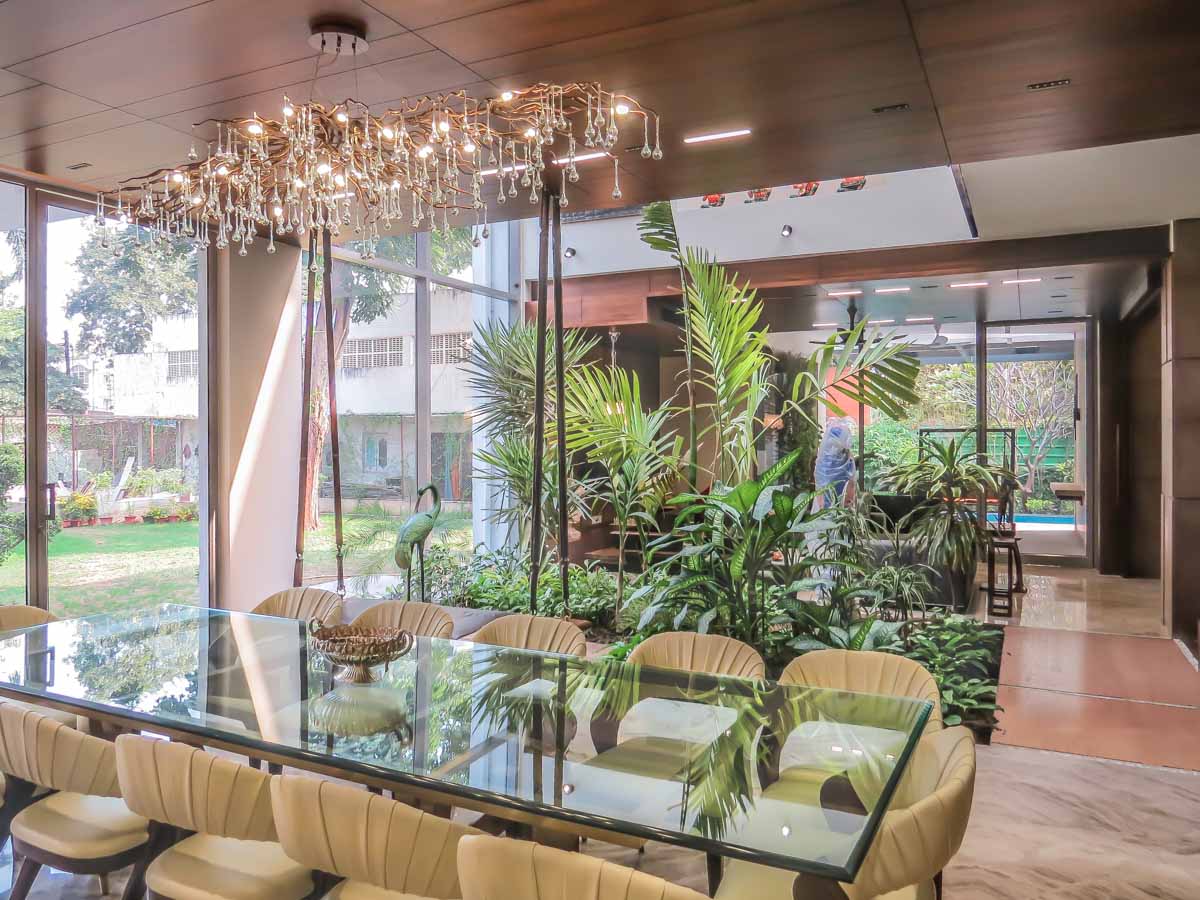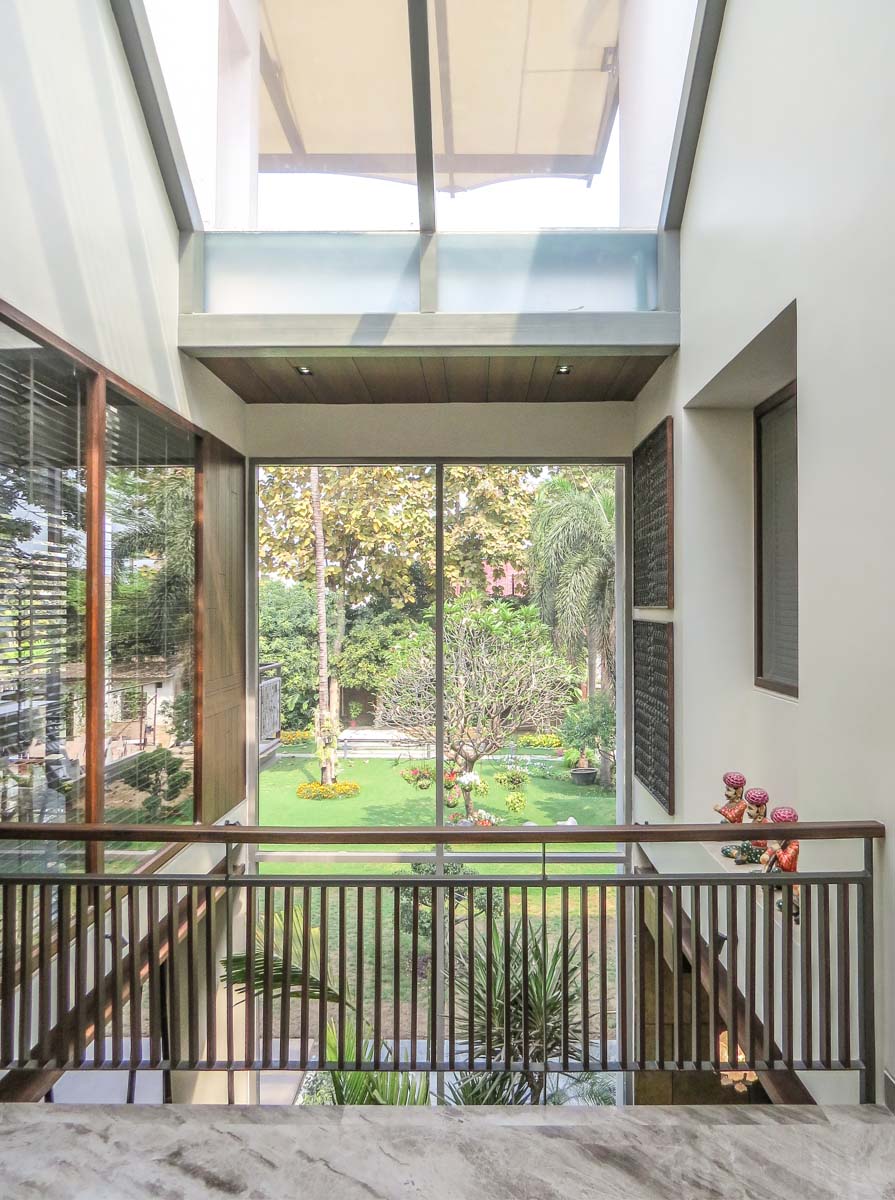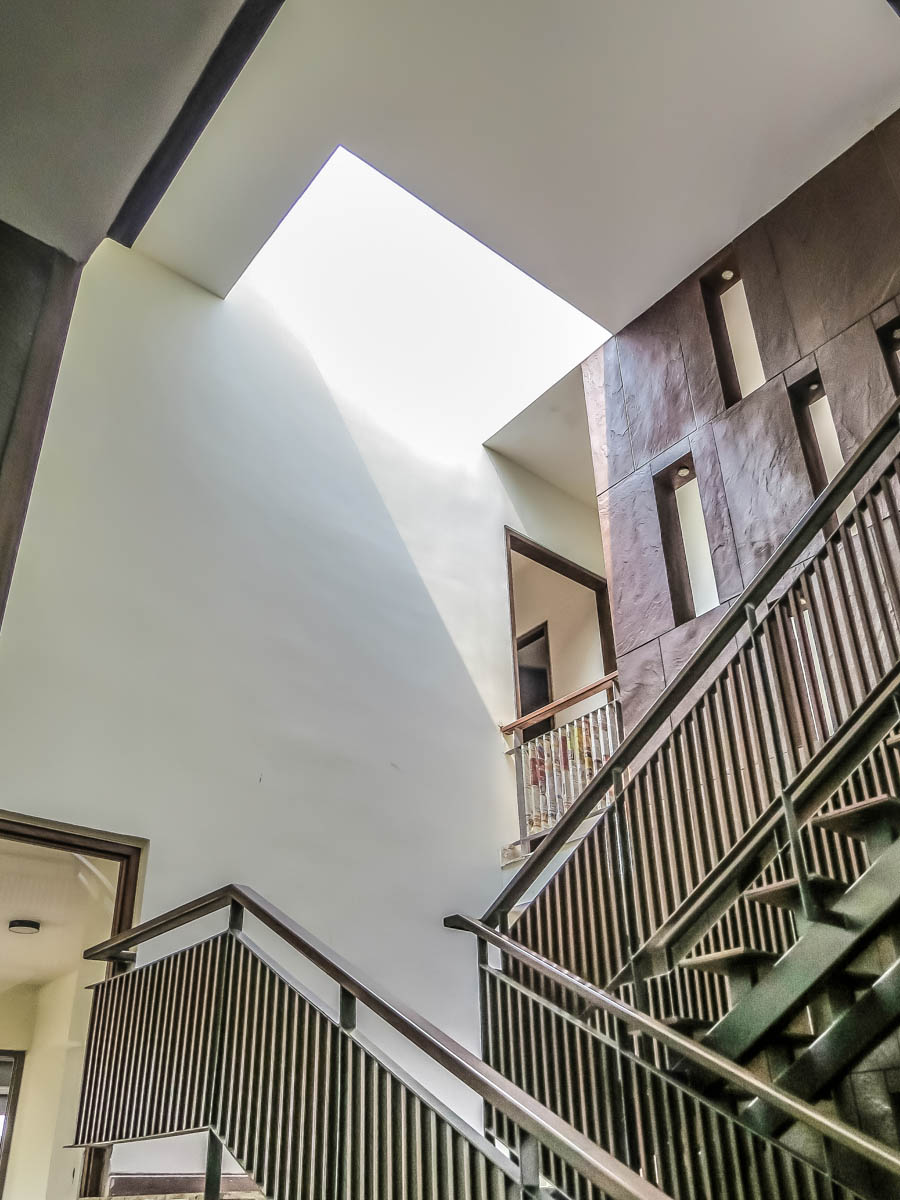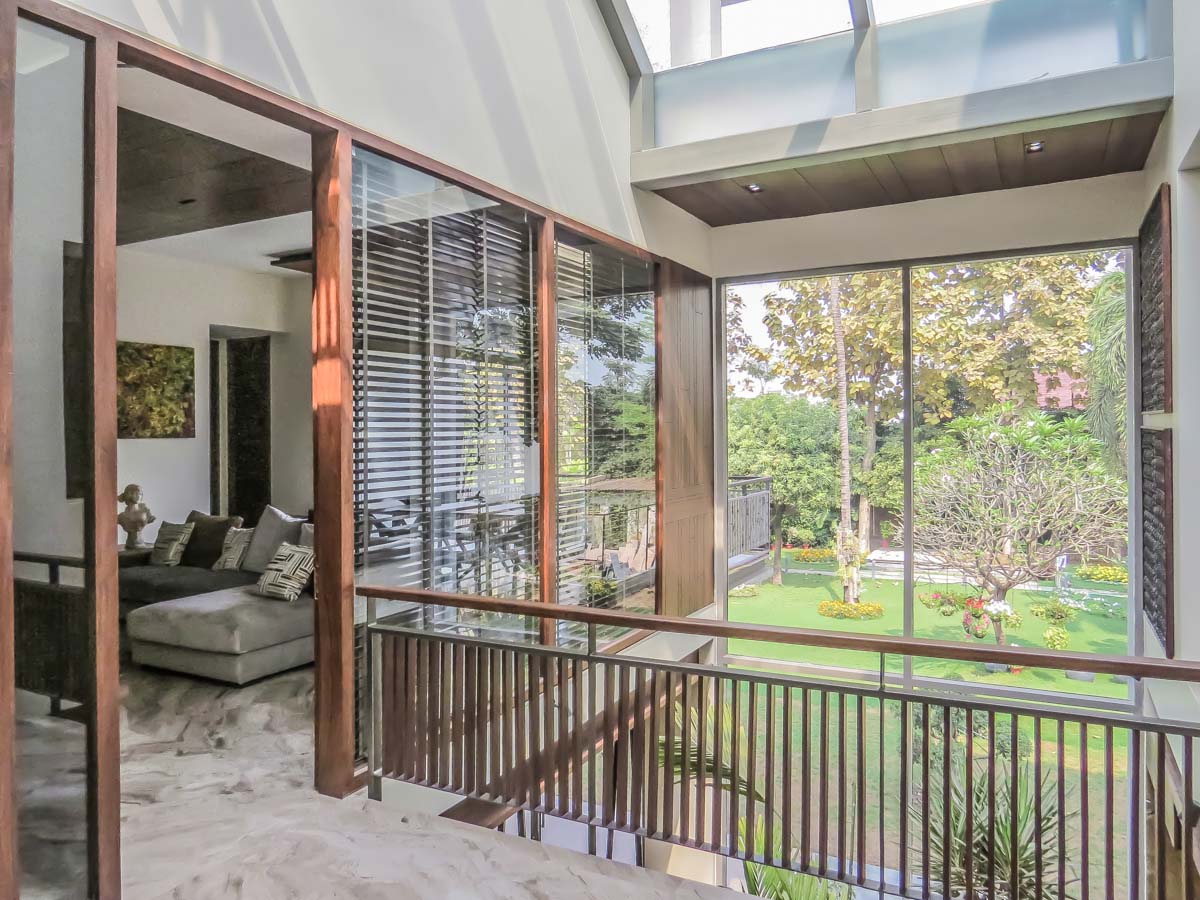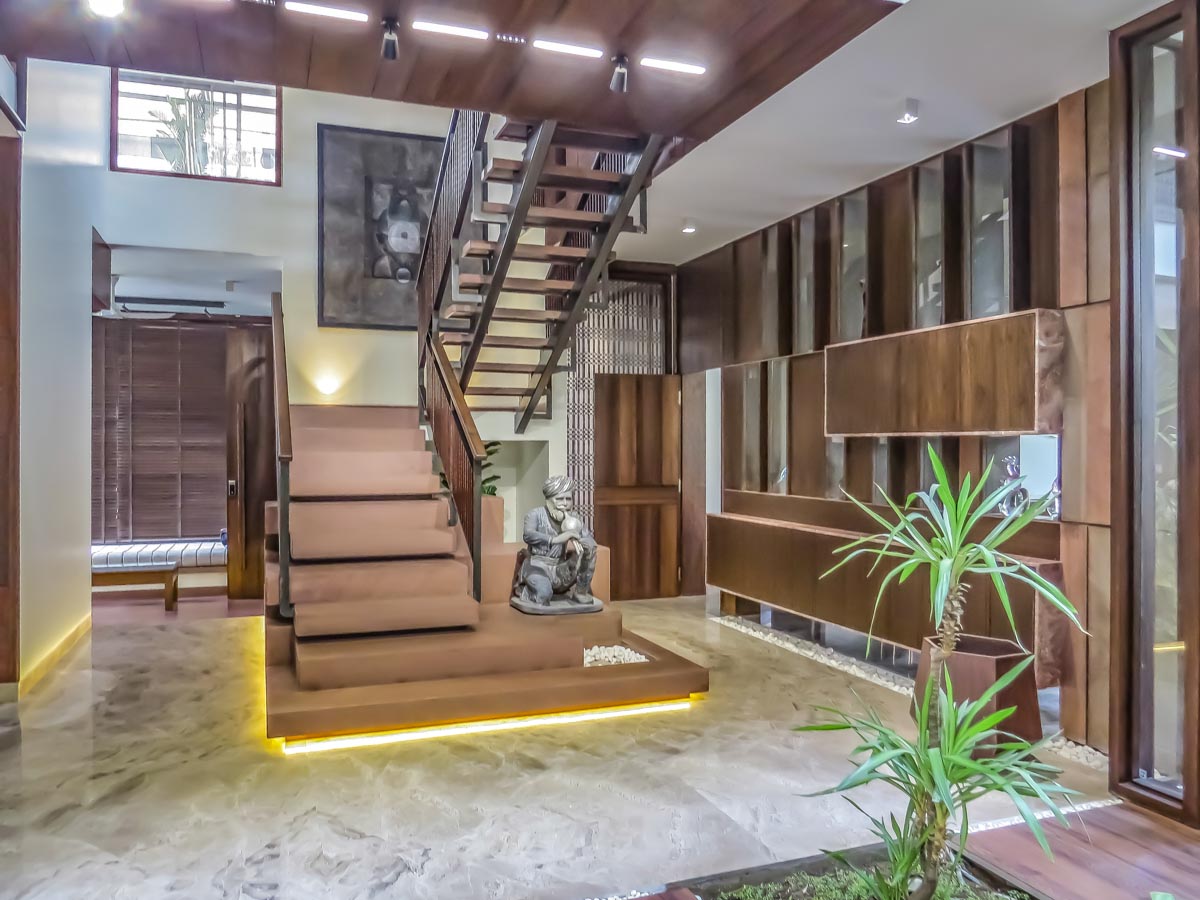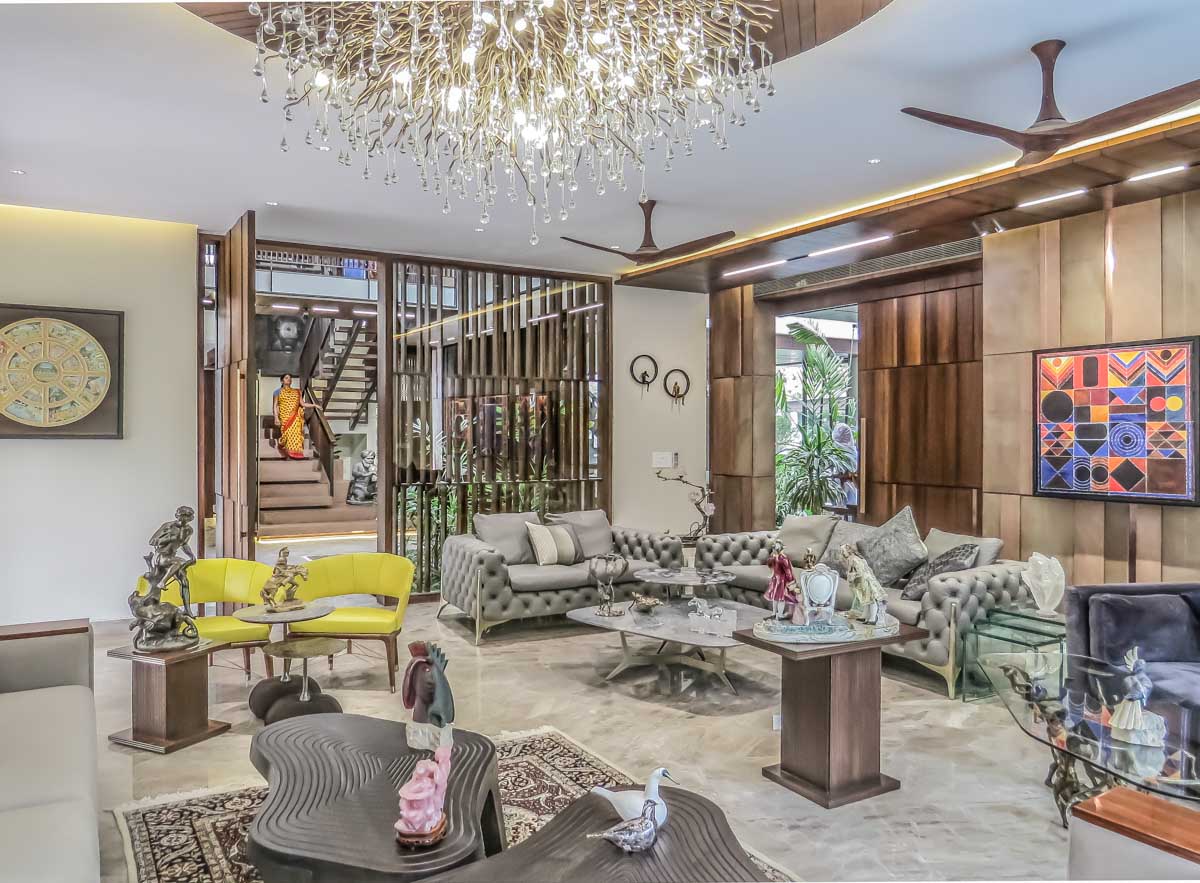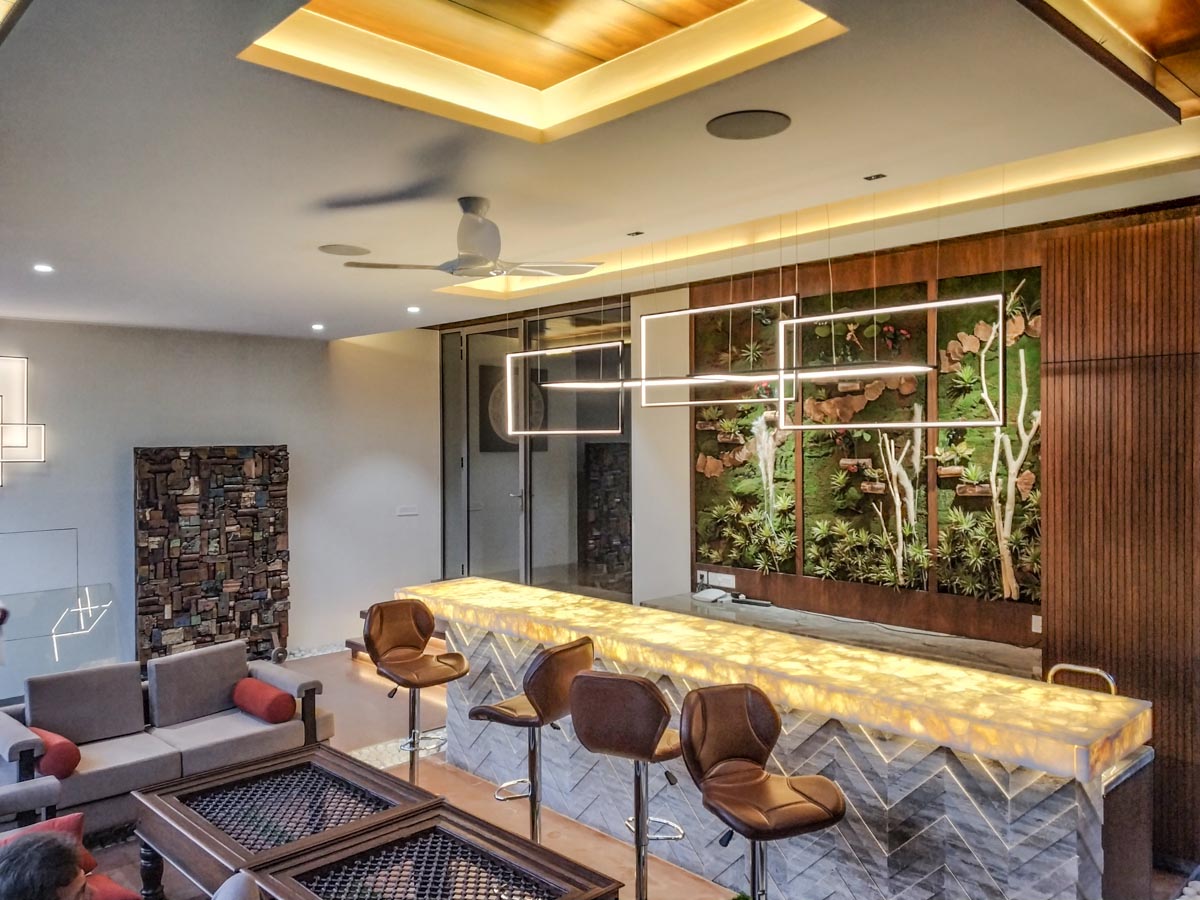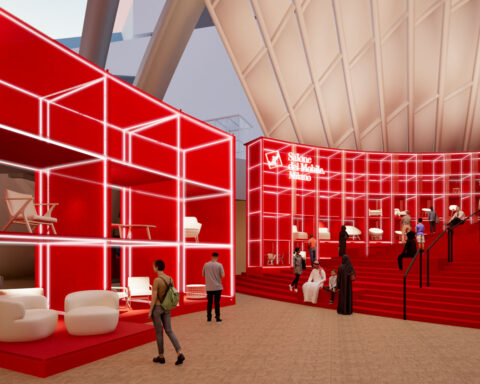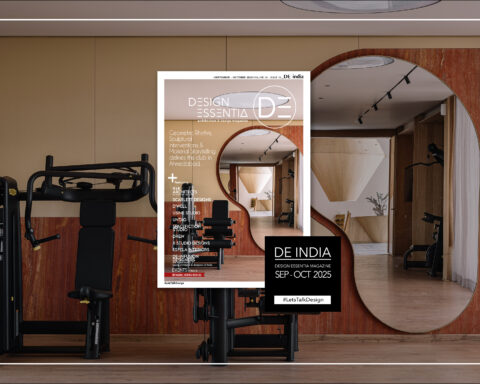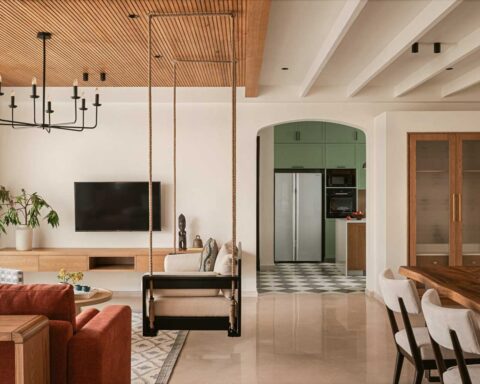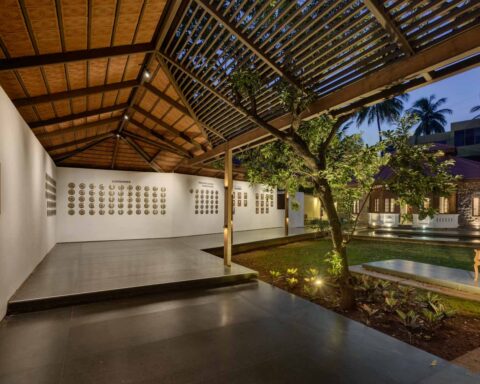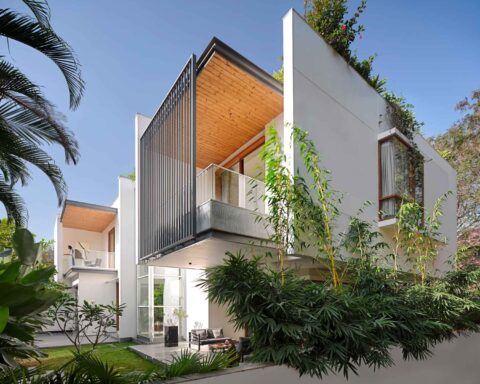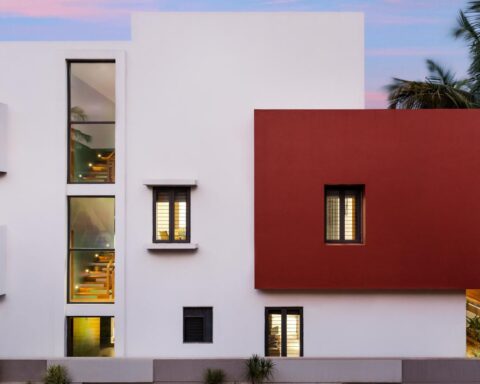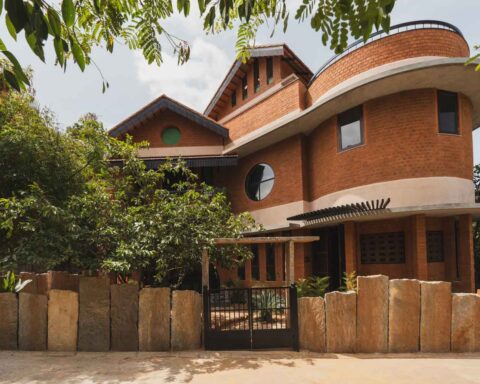Project Name : The Pavilion House
Project Location : Bhilai, Chhattisgarh, India
Project Site Area : 25,000 sq. ft.
Project Built Area : 12,500 sq. ft.
Architects/Designer : Flyingseeds Design Studio
Project Status : Built
Photographer: Abhinav Chaudhary
Text description by the architects;
In the Contemporary world the definition of a home has evolved substantially. The Expectations and demands are changing from just Comfort, aesthetics and safety of a shelter to lifestyle, luxury, statement, a work of art with personalities in their own right. It’s the Architects’ responsibility to take up this challenge to not just meet these demands but bring in traditional and global concerns consciously on the board, innovatively. Conceding that each unique idea getting built as someone’s home will stay there for the sands of time and will influence the society, ecosystem on a micro and macro level. Thus the approach towards the idea and how it is nurtured, shall define the course of the private residence design.
The site, around 25000sqft, was a flat, long rectangular profile orienting North-South with an existing house of the owner on the extreme South west segment of the plot and a vast garden towards north.
The brief was to design a new contemporary house next to the existing, with the open garden all to it. This new house belongs primarily to the new Generation, two young boys who were about to start their own family soon.
The Family being affable and social, always believed in meeting and hosting community gatherings often in their own premises, hence we were aspired to ideate a zestful, young Contemporary Indian house nestled within nature, dedicated for recreational pursuit!
To start with, The Ground floor level was conceived as a free flowing open layout with blurred boundaries between the interconnected spaces, which eventually could act as one big public space when needed.
The New house shares the entrance porch and reception with the existing house. Both the house units have been intentionally connected with an axial wall, which originates from the existing house, travels through the fascia of existing Temple and divides the entire building footprint in 1:2, which is further divided into three equal rectangular zones – Living, Common area and Private Zones stretching from North to South. The Fragmental Wall, as we call it, is the transition element, made out of indigenous limestone, articulated with strategic openings, between the Living, Drawing and Common lobby. Once in the entrance lounge, this free standing wall is the main guiding axis travelling throughout the length along the common lobby and Drawing room till the edge of the Pool.
On the south end of the Pool sits the secluded entity ‘The Pavilion’ overlooking the pool. The glass Pavilion has been envisaged as the tranquil recreation hub of the house, floating above the pool, is the final destination of all the movement routes at ground floor level. It is connected to the semi-covered bar extending out of the Drawing room on one side and to the living room deck through glass steps over the pool on another side. The Drawing room too participates with the pool on the east with large full height windows. The flexible nature of the living areas moulds themselves by spilling over and merging together as per the size of the gathering.
A prominent existing Plumeria tree in the center of the rear Garden in North, induces the built mass and carves in a part of the garden deep into the core of the building, thereby bringing the nature indoors to bloom right in the center of the living pace and be in constant transmission with it. The green court is secured by a double height glazing and an inclined north skylight on the top making it a large Green Terrarium amplifying the openness and bringing in the abundance of North light throughout the day for the living and common areas. The living spaces are oriented towards the vast garden and features full height glass windows to invigorate transparency and undeterred views.
The South façade of the house comprises a thick double cavity wall with small apertures integrated with specifically designed solar shading louvers to achieve efficient passive thermal insulation and block the harsh Sun of long summers of central India.
All the master bedrooms sit on the first and second floor and align to the south edge of the house.
The New house connects the existing one at first floor through a wide green bridge, right above the entrance portico. The connecting bridge and the terraces flaring out in north and south have been encapsulated with the spunky, light MS canopies with soft Tensile Fabric coverings that not just protect from sun and heavy monsoons but also distinctively compliments the heavy solid built mass.
The clients being Art aficionados had huge collections of the legendary paintings and sculptures; the fragmental wall and others became the display background for the selected paintings and the souvenirs adds another layer of harmony and charm to the stimulating inside out environment of the ‘Pavilion House’.
Photographer: Abhinav Chaudhary
PROJECT CREDITS
Architecture & Interior Design : Flysingseeds Design Studio, New Delhi
Principal Architects : Abhinav Chaudhary and Kakoli Bhattacharya
Design Team : Pushpendra Kashyap, Shubham Jain, Akshita Rana
check out the above full story in our DE MAY-JUN 2021 Edition ; introducing the Beautiful Homes edition!!






